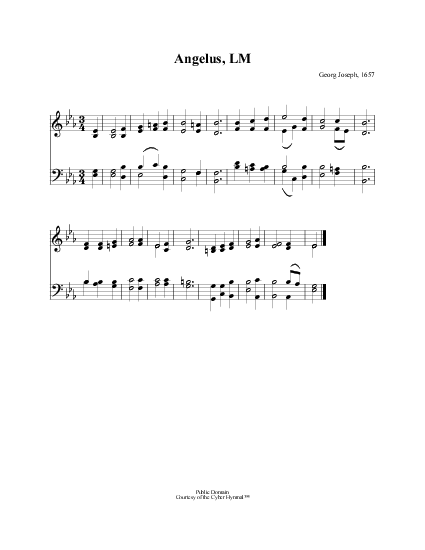- |
User Links
O Savior, is thy promise fled?

O Savior, is thy promise fled?
Author: Reginald HeberPublished in 26 hymnals
Printable scores: PDF, Noteworthy ComposerAudio files: MIDI
Representative Text
1 O Savior! Is Thy promise fled?
Nor longer may Thy grace endure,
To heal the sick, and raise the dead,
And preach Thy Gospel to the poor?
2 Come, Jesus! Come, return again:
With brighter beams Thy servants bless,
Who long to hail Thy perfect reign,
And share Thy kingdom’s happiness.
3 A feeble race, by passion driven,
In darkness and in doubt we roam,
And lift our anxious eyes to Heaven,
Our hope, our harbor, and our home.
4 Come, Jesus! come; and as of yore,
Thy prophet went to clear the way,
A harbinger Thy feet before,
A dawning to Thy brighter day.
5 So, ere again we see Thy face,
Our stony hearts for truth prepare;
Sow in our souls the seed of grace,
Then come and reap Thy harvest there.
Source: The Cyber Hymnal #9589
Author: Reginald Heber
 Reginald Heber was born in 1783 into a wealthy, educated family. He was a bright youth, translating a Latin classic into English verse by the time he was seven, entering Oxford at 17, and winning two awards for his poetry during his time there. After his graduation he became rector of his father's church in the village of Hodnet near Shrewsbury in the west of England where he remained for 16 years. He was appointed Bishop of Calcutta in 1823 and worked tirelessly for three years until the weather and travel took its toll on his health and he died of a stroke. Most of his 57 hymns, which include "Holy, Holy, Holy," are still in use today.
-- Greg Scheer, 1995… Go to person page >
Reginald Heber was born in 1783 into a wealthy, educated family. He was a bright youth, translating a Latin classic into English verse by the time he was seven, entering Oxford at 17, and winning two awards for his poetry during his time there. After his graduation he became rector of his father's church in the village of Hodnet near Shrewsbury in the west of England where he remained for 16 years. He was appointed Bishop of Calcutta in 1823 and worked tirelessly for three years until the weather and travel took its toll on his health and he died of a stroke. Most of his 57 hymns, which include "Holy, Holy, Holy," are still in use today.
-- Greg Scheer, 1995… Go to person page >Text Information
| First Line: | O Savior, is thy promise fled? |
| Author: | Reginald Heber |
| Language: | English |
| Copyright: | Public Domain |
Notes
O Saviour, is Thy promise fled? Bishop R. Heber. [Advent.] This is the third of the four hymns contributed by Heber to the October number of the Christian Observer, 1811. It was given for the 3rd Sunday in Advent, and consisted of 5 stanzas of 4 lines. In Heber's posthumous Hymns, &c, 1827, p. 10, it is slightly altered and expanded to 6 stanzas of 4 lines, the new stanza being "Yet, 'mid the wild and wintry gale." It is in common use in its full form as in Thring's Collection, 1882, and in an abbreviated form as in Common Praise, 1879. There are also two centos, both beginning "Come, Jesus, come, return again," the first, in the American Unitarian Hymns for the Church of Christ, Boston, 1853, and others, consisting of stanzas ii.-iv. of the 1827 text; and the second in the Islington Psalms & Hymns, 1862, No. 270, where stanzas ii, v., vi. are given. The latter arrangement is also repeated in other collections. The original hymn is based upon the Gospel for the 3rd Sunday in Advent, St. Matt. xi. 2-10.
--John Julian, Dictionary of Hymnology (1907)


 My Starred Hymns
My Starred Hymns


